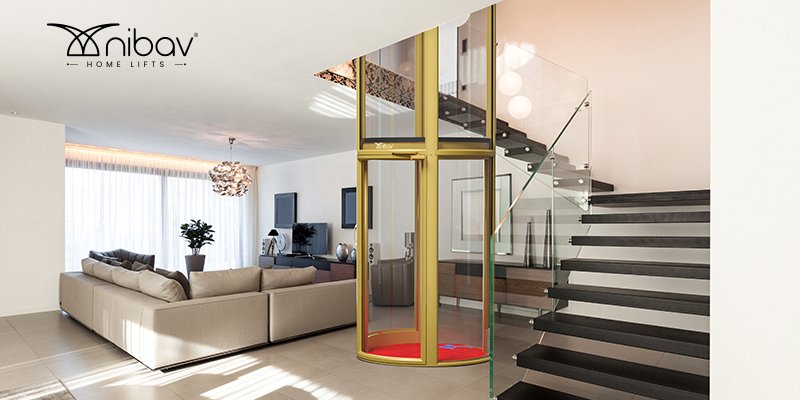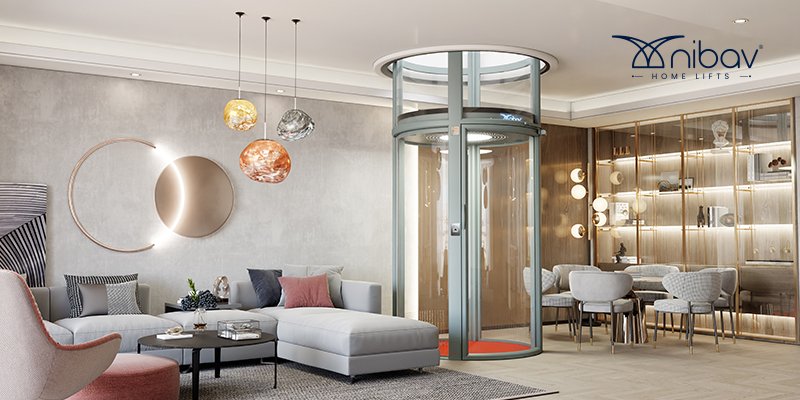Safety Tips for Home Elevators: A Guide to Choosing Safe Residential Lifts
As residential elevators become increasingly popular in modern homes, safety remains a critical concern for homeowners considering the installation of a home lift. Whether you’re looking to add convenience, enhance accessibility for elderly family members, or simply boost your home’s value, ensuring that your chosen elevator meets the highest safety standards is essential. In this comprehensive guide, we’ll explore the key safety considerations when selecting and maintaining home elevators, particularly focusing on the innovative and reputable Nibav Home Lifts.

Why Safety is Important for Home Elevators
Home elevators are not just a luxury addition; they serve an essential role in providing seamless access between floors for individuals with mobility challenges. However, as with any mechanical system, there are inherent risks if proper safety precautions are not observed. A safe home lift protects the well-being of its users and prevents potentially costly or dangerous malfunctions. It is crucial to select a home elevator system that prioritizes safety, reliability, and ease of use.
Key Safety Features in Home Elevators
When shopping for a home elevator, it’s important to look for models equipped with advanced safety features that meet or exceed industry standards. Here are some of the key safety features to consider:
Automatic Door Systems
Automatic door systems help prevent accidents by ensuring the doors are only open when the elevator is properly aligned with the floor. This feature reduces the risk of falls or entrapment by closing the doors securely during operation.
Emergency Backup Power
A power failure can leave you stranded in a lift between floors, which can be both frustrating and unsafe. Elevators with emergency backup power systems allow the lift to continue to a designated floor and open its doors safely in case of a power outage.
Safety Brakes and Speed Governors
Safety brakes and speed governors are essential components that control the speed of the elevator and bring it to a safe halt if something goes wrong. If the elevator exceeds its normal speed, the governor triggers the safety brakes to prevent sudden drops.
Alarm Systems and Intercom
Most modern home elevators come with alarm systems and intercoms to communicate with people outside in case of an emergency. This can be particularly helpful if there is an equipment malfunction or if someone inside the lift needs assistance.
Soft Start and Stop Mechanism
A smooth start and stop mechanism ensures that the elevator doesn’t jolt when it begins or finishes its journey. This is particularly important for elderly passengers or those with mobility issues, as sudden movements can cause falls or injuries.
Nibav Home Lifts – A Leader in Safety and Innovation
Nibav Home Lifts stand out in the market, not just for their innovative design but also for their unwavering focus on safety. Designed with meticulous attention to detail, these lifts cater to the needs of modern homes while ensuring the highest safety standards.
Nibav’s vacuum elevators offer several safety benefits over traditional hydraulic or traction elevators. Their unique pneumatic technology eliminates the need for cables or counterweights, minimizing the risk of mechanical failures. These lifts also come with advanced safety features such as:
- Self-Supporting Structure: Nibav Home Lifts require no separate machine room or pit, reducing the risk of structural issues.
- Emergency Descend Feature: In case of power loss, Nibav lifts automatically descend to the nearest floor using air pressure and gently open the doors.
- 360-Degree Glass View: The transparent cabin offers a clear view of the surroundings, ensuring comfort and peace of mind for the users.
Common Safety Concerns and Solutions
Entrapment
One of the most common fears associated with elevators is the risk of entrapment. Modern home elevators are designed with failsafe systems, including backup power supplies and emergency communication systems, to prevent users from being trapped inside the lift during a power failure or malfunction.
Overloading
Overloading the elevator can lead to dangerous malfunctions. Home elevators, including those by Nibav, come with weight sensors that prevent operation when the load exceeds the maximum capacity. This feature helps prevent accidents and ensures smooth operation.
Maintenance and Inspections
Regular maintenance is key to ensuring the long-term safety of your home elevator. Neglecting routine inspections can lead to mechanical failures that compromise the safety of the lift. It is highly recommended to schedule regular servicing by certified professionals who are familiar with your specific elevator model.
Maintenance Best Practices for Home Elevators
A safe elevator is a well-maintained elevator. Here are some best practices to keep in mind:
Routine Inspections
Most manufacturers recommend having your elevator inspected annually by a certified technician. During the inspection, they will check for worn components, test safety features, and ensure the system is operating as it should.
Keep an Eye on Wear and Tear
Even the best elevators can experience wear and tear over time. If you notice any unusual noises, jerky movements, or issues with the doors, it’s important to call a technician immediately to address the problem.
User Training
It’s important to educate everyone in the household about how to use the elevator safely. This includes avoiding overloading, keeping doors clear, and knowing what to do in case of an emergency.
Regulatory Standards for Home Elevators in India
In India, home elevators must adhere to specific safety regulations set by authorities such as the Bureau of Indian Standards (BIS). These regulations are in place to ensure that residential elevators meet the necessary safety and performance benchmarks. Homeowners should always verify that their chosen elevator complies with these safety standards to avoid legal complications and ensure optimal performance.
How Nibav Elevators Meet Safety Standards
Nibav Elevators not only comply with Indian safety regulations but also follow international safety standards, ensuring their products are safe and reliable. The pneumatic vacuum system used in Nibav lifts reduces the chances of mechanical failures and provides a seamless and safe user experience. Additionally, their commitment to eco-friendly and space-saving designs ensures that homeowners get a safe, functional, and aesthetically pleasing lift for their residence.
Conclusion: Prioritizing Safety in Your Home Elevator Selection
Choosing the right home elevator involves more than just aesthetics or convenience; safety should be your top priority. By selecting an elevator from a reputable company like Nibav and ensuring regular maintenance, you can enjoy the benefits of added convenience, accessibility, and property value without compromising the safety of your family.


